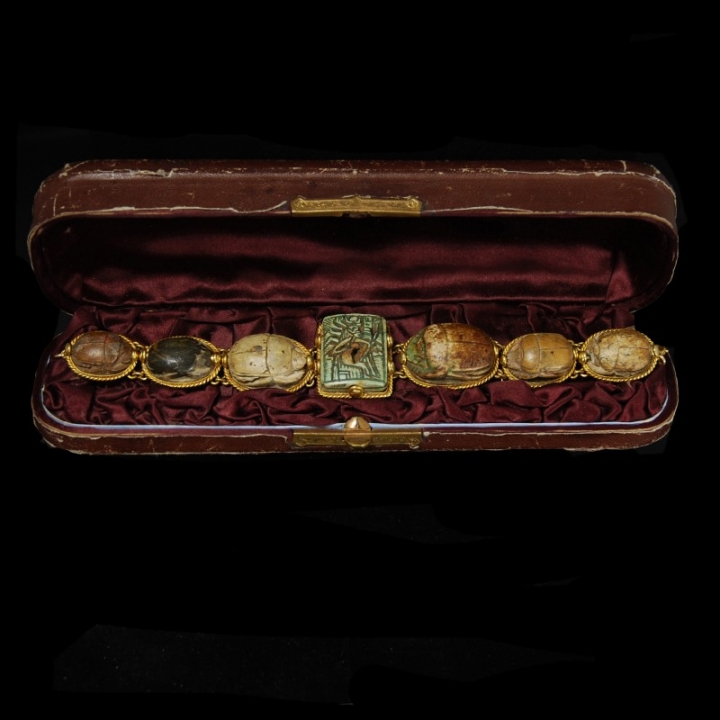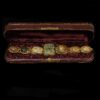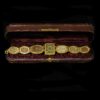Important Gold Bracelet with Six Scarabs and one Faience Amulet
Culture: Egyptian
Period: 18th dynasty to 3rd Intermediate Period, 1486-664 B.C.
Material: Faience, Steatite, Gold
Dimensions: 20 cm long
Price: Sold
Ref: 1184
Provenance: With the original description by the famous Italian Egyptologist and archeologist Ernesto Schiaparelli of 29 November 1921. Last in a southern French private collection. Accompanied by a French antiquities passport.
Condition: Traces of aging on the leather etui, the bracelet and the amulets are wonderfully preserved.
Description: Six important ancient scarabs and an ancient faience amulet set in an gold bracelet from the late 19th or early 20th century. The first scarab from the right carries the name of Ramses II, ruling as Ramses the Great for 66 years over Egypt. The second scarab with the name of Thutmose III, the famous general and pharaoh of the 18th dynasty. On the third scarab are numerous symbols – the Hes vase as a ritual vessel, the Pschent crown as well as a seated sphynx with head jewellery from Lower Egypt and the symbol of the North. In the centre of the bracelet an important amulet depicting in the front the nursing goddess Isis surrounded by reed and lotus plants in the Nile delta, where she is hiding with her son and breastfeeding him. On the other side a scarab with various symbols and hieroglyphs. On the fourth scarab is a sistrum between two uraeus snakes with the crown of Upper Egypt engraved. The fifth scarab carved with a kneeling pharaoh worshipping the sun god Ra. And the sixth scarab with the depiction of the seated pharaoh Thutmose II left and right with his name cartouche. The bracelet was described on 29 November 1921 by the famous Italian Egyptologist Ernesto Schiaparelli in Turin (original document available). Schiaparelli’s signature was officially certified right after his death on 8 May 1928 by the Torino superintendent. With an old leather etui.






